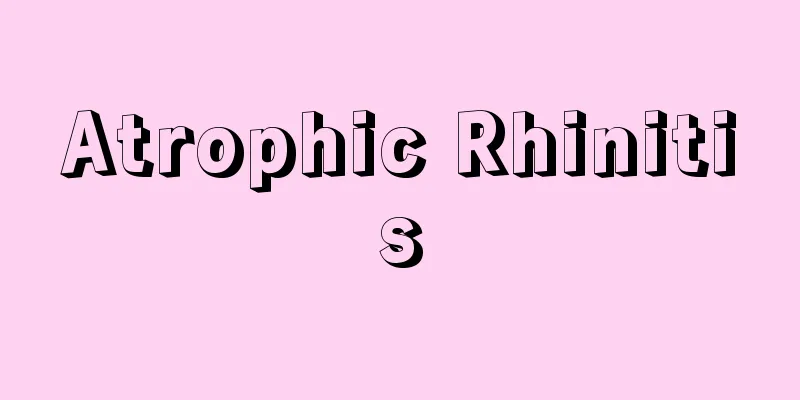gentianine

|
…It grows in sunny grasslands throughout Japan, and is widely distributed from Sakhalin, the Kuril Islands, Siberia, Kamchatka, China, to the eastern edge of Europe. The plant contains gentianin as well as xanthones (1-hydroxy-2,3,4,5-tetramethoxyxanthone, etc.), and is used in traditional Chinese medicine as an antipyretic and antidote to poisons. [Toyokuni Hideo]. … From [Menyanthes trifoliata]…It is distributed from Hokkaido to Kyushu, and as a circumpolar plant, it is widely distributed in the Northern Hemisphere from 70° to 35° north latitude. The dried leaves are called suisaiyo in traditional Chinese medicine and are used as a bitter stomachic, containing gentianine and menthiafolin. The roots are called suisaikon, containing loganin and menthiafolin, and are effective against high blood pressure in addition to being a stomachic. … From 【Gentian】... Japanese gentians are divided into four genera: Gentiana, Alpine Gentiana, Trifolium crenata and Trifolium. The genus Gentiana (English name: gentian) includes the alpine species G. makinoi Kusn., G. triflora Pall.var. japonica (Kusn.) Hara, the pale yellow-flowered Japanese gentian G. algida Pall. (illustration), the small alpine species G. nipponica Maxim., as well as the annual or biennial grassland species G. zollingeri Fawc. (illustration), G. squarrosa Ledeb. and the wetland species G. thunbergii (G.Don) Griseb. (illustration). The rhizomes and roots of Gentiando contain bitter substances such as the bitter glycoside gentiopicrine and gentianine, and in traditional Chinese medicine it is called gentian gall bladder and is used as a bitter stomachic, and is also used in combination with other herbal medicines to reduce fever, hepatitis, sore throat, otitis media, high blood pressure, and urethritis. In addition, the roots and rhizomes of Gentiana lutea (also simply called gentiana), native to Europe, that have been fermented to some extent, also contain the bitter glycoside gentiopicrine and are used as a bitter stomachic for impaired digestive function and chronic gastritis. *Some of the terminology that mentions "gentianine" is listed below. Source | Heibonsha World Encyclopedia 2nd Edition | Information |
|
…日本全土の日当りのよい草地に生育し,サハリン,千島列島,シベリア,カムチャツカ,中国からヨーロッパの東端まで広く分布する。植物体には,ゲンチアニンgentianineのほかにキサントンxanthone類(1‐ヒドロキシ‐2,3,4,5‐テトラメトキシキサントンほか)を含み,漢方では解熱・解毒剤とする。【豊国 秀夫】。… 【ミツガシワ】より…北海道~九州に分布し,周極植物として北半球の北緯70゜から35゜付近まで広く分布する。乾燥葉は漢方で睡菜葉(すいさいよう)といい,苦味健胃薬として用いられ,ゲンチアニンgentianine,メンチアホリンmenthiafolinを含む。根は睡菜根(すいさいこん)と呼び,ロガニンloganin,メンチアホリンを含み,健胃薬のほかに高血圧に効く。… 【リンドウ(竜胆)】より… 日本産のリンドウ類は,リンドウ属,タカネリンドウ属,チシマリンドウ属,サンプクリンドウ属の4属に分けられ,リンドウ属Gentiana(英名gentian)には,高山性のオヤマリンドウG.makinoi Kusn.,エゾリンドウG.triflora Pall.var.japonica (Kusn.) Hara,花が淡黄色のトウヤクリンドウG.algida Pall.(イラスト),高山性で小型のミヤマリンドウG.nipponica Maxim.,また一,二年草で草地に生えるフデリンドウG.zollingeri Fawc.(イラスト)やコケリンドウG.squarrosa Ledeb.,湿地に生育するハルリンドウG.thunbergii (G.Don) Griseb.(イラスト)などがある。 トウリンドウは根茎および根に苦味配糖体ゲンチオピクリンgentiopicrine,ゲンチアニンgentianineなどの苦味成分を含み,漢方では竜胆(りゆうたん)とよばれ,苦味健胃薬として用いられ,また他の生薬と配合して,解熱,肝炎,咽喉炎,中耳炎,高血圧,尿道炎などにも用いられる。また,ヨーロッパ原産のゲンチアナ・ルテア(単にゲンチアナともいう)G.lutea L.の根および根茎を多少発酵させたものも,苦味配糖体ゲンチオピクリンなどを含み,苦味健胃薬として消化機能低下,慢性胃炎などに用いられる。… ※「gentianine」について言及している用語解説の一部を掲載しています。 出典|株式会社平凡社世界大百科事典 第2版について | 情報 |
>>: Gentianella yuparensis (English spelling) Gentianella yuparensis
Recommend
Storytelling book - Kodanbon
〘 noun 〙 A collection of kodan stories in a book. ...
helicopter cruiser
…The Soviet Union was the only country that built...
Seizure - Confiscated
In a broader sense, it refers to an act of author...
Mr. Minagawa
A medieval and early modern samurai family from Sh...
Chesterfield
A city in the northeast of Derbyshire, central Eng...
Action Star
…Rose Gibson (Mrs. Hoot Gibson) later became the ...
Positiv
…There are various sizes of organs depending on t...
World Handball Council
…Currently, handball is played in English-speakin...
Kallias (English spelling)
[raw]? [died] After 289 BC, he was an ancient Gree...
Oonoke - Oonoke
...A wide range of specialized skills, including ...
Allobroges - Allobroges (English spelling)
A Celtic tribe from Gallia Narbonensis who lived i...
bāṭin (English spelling)
... Throughout history, there have been some extr...
Takatsukasa family
The main line of the Northern House of the Fujiwa...
Thebai (English spelling)
Thebes was founded in the 15th century by the Gre...
Operator - Unkougyousha
Shipping management can be broadly divided into (1...









